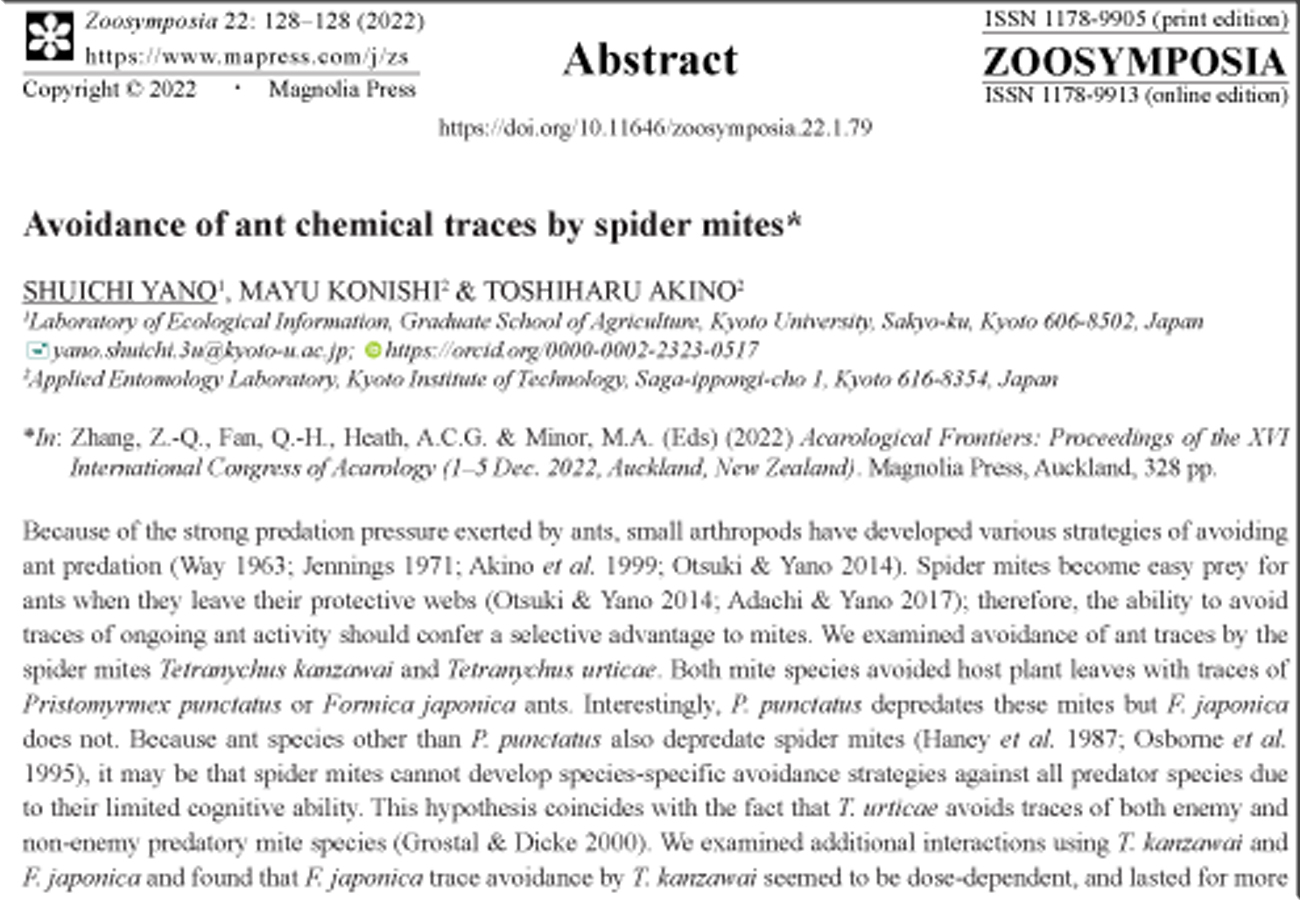Abstract
Because of the strong predation pressure exerted by ants, small arthropods have developed various strategies of avoiding ant predation (Way 1963; Jennings 1971; Akino et al. 1999; Otsuki & Yano 2014). Spider mites become easy prey for ants when they leave their protective webs (Otsuki & Yano 2014; Adachi & Yano 2017); therefore, the ability to avoid traces of ongoing ant activity should confer a selective advantage to mites.
References
Adachi, M. & Yano, S. (2017) Ant-mediated indirect negative effects of aphids on spider mites living on the same plant. Experimental and Applied Acarology, 72(1), 15–21. https://doi.org/10.1007/s10493-017-0136-8
Akino, T., Knapp, J.J., Thomas, J.A. & Elmes, G.W. (1999) Chemical mimicry and host specificity in the butterfly Maculinea rebeli, a social parasite of Myrmica ant colonies. Proceedings of the Royal Society of London Series B: Biological Sciences, 266 (1427), 1419–1426. https://doi.org/10.1098/rspb.1999.0796
Grostal, P., & Dicke, M. (2000) Recognising one’s enemies: a functional approach to risk assessment by prey. Behavioral Ecology and Sociobiology 47(4), 258-264. https://doi.org/10.1007/s002650050663
Haney, P.B., Luck, R.F. & Moreno, D.S. (1987) Increases in densities of the citrus red mite, Panonychus citri (Acarina: Tetranychidae), in association with the argentine ant, Iridomyrmex humilis (Hymenoptera: Formicidae), in southern California citrus. Entomophaga. 32(1), 49–57. https://doi.org/10.1007/BF02390931
Jennings, D.T. (1971) Ants preying on dislodged jack-pine budworm larvae. Annals of the Entomological Society of America, 64 (2), 384–385. https://doi.org/10.1093/aesa/64.2.384
Osborne, L.S., Pena, J.E. & Oi, D.H. (1995) Predation by Tapinoma melanocephalum (Hymenoptera: Formicidae) on twospotted spider mites (Acari: Tetranychidae) in Florida greenhouses. Florida Entomologist. 78 (4),565–570.
Otsuki, H. & Yano, S. (2014) Functionally different predators break down antipredator defenses of spider mites. Entomologia Experimentalis et Applicata, 151(1), 27–33. https://doi.org/10.1111/eea.12164
Way, M.J. (1963) Mutualism between ants and honeydew-producing Homoptera. Annual Revew of Entomology, 8(1), 307–344. https://doi.org/10.1146/annurev.en.08.010163.001515


